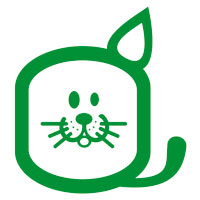Los Artículos sobre Mascotas (Perros o Gatos) de PETSmania
Ir a indice de Artículos
Treeing Feist
Estandar de la Raza Treeing Feist
Por :
Michigan (Estados Unidos)
Seccion:
TREEING FEIST
Official UKC Breed Standard
Terrier Group
©Copyright 2000, United Kennel Club, Inc.
Revised January 1, 2004
The goals and purposes of this breed standard include: to furnish guidelines for breeders who wish to maintain the quality of their breed and to improve it; to advance this breed to a state of similarity throughout the world; and to act as a guide for judges.
Breeders and judges have the responsibility to avoid any conditions or exaggerations that are detrimental to the health, welfare, essence and soundness of this breed, and must take the responsibility to see that these are not perpetuated.
Any departure from the following should be considered a fault, and the seriousness with which the fault should be regarded should be in exact proportion to its degree and its effect upon the health and welfare of the dog and on the dog’s ability to perform its traditional work.
HISTORY
The word “feist” is an ancient one referring to a small, often noisy, dog. Like the Cur breeds, the Feist breeds were developed in the rural South by breeders who needed low-maintenance dogs to hunt small game and to eliminate vermin. Feists were often the result of crosses between hunting hounds and terriers. Today’s Treeing Feist is the result of generations of breeding for performance and it is still primarily used to hunt squirrel, although they are also used to hunt raccoon, rabbits and flushing game birds.
The Treeing Feist was recognized by UKC on November 1, 1998.
GENERAL APPEARANCE
The Treeing Feist is an agile, active, small tree dog. The body is slightly longer than tall. Regardless of the size of the individual dog, the legs must be long enough to allow the dog to move quickly and with agility in rough terrain. The head is blocky, with a broad skull, a moderate stop, and a strong muzzle. The tail is straight, set on as a natural extension of the topline, and may be natural or docked. The coat is short and smooth. The Treeing Feist should be evaluated as a working dog, and exaggerations or faults should be penalized in proportion to how much they interfere with the dog’s ability to work. Scars should neither be penalized nor regarded as proof of a dog’s working abilities.
CHARACTERISTICS
Treeing Feists are used most frequently to hunt squirrel, raccoon, and opossum. They hunt using both sight and scent and are extremely alert dogs. On track, they are virtually silent.
HEAD
The head is proportionate to the size of the body. When viewed from the side, the muzzle is slightly shorter than the skull and joined by a definite stop. The planes of the skull and muzzle are parallel.
SKULL - The skull is flat and broad, tapering slightly toward the muzzle. Cheeks are muscular, but not over-developed.
MUZZLE - The muzzle is long and sufficiently broad and deep to balance the skull. Lips are tight. Lip pigment matches nose pigment and eye rims.
TEETH - The Treeing Feist has a complete set of evenly spaced, white teeth meeting in a scissors bite.
NOSE - Nose color is black or self-colored.
EYES - Eyes are brown, ranging from dark to amber. Eye rims match nose pigment.
EARS - Ears are set at the outside edges of the skull and may be erect or button, but not pendulous.
NECK
The neck is clean, muscular, and of moderate length. The neck gradually widens from the nape and blends smoothly into the shoulders.
FOREQUARTERS
Shoulders are well laid back. The upper arm is long and forms an apparent 90-degree angle with the shoulder blade. The forelegs are strong, straight, and moderately well boned. The elbows are set close to the body, but able to move freely in action. The pasterns are short, powerful, slightly sloping, and flexible. “Bench legs” are acceptable but not preferred.
BODY
A properly proportioned Treeing Feist is slightly longer than tall. Chest is moderately wide and deep, with the brisket reaching to the elbow. Ribs are well sprung and extend well back. Back is of moderate length, and level, blending into a muscular, slightly arched loin with slight to moderate tuck-up.
HINDQUARTERS
The hindquarters are strong and muscular. The bone, angulation, and musculature of the hindquarters are in balance with the forequarters. The stifles are well bent, and the hocks are well let down. When the dog is standing, the short, strong rear pasterns are perpendicular to the ground, and viewed from the rear, parallel to one another.
FEET
The feet are round, well arched, and tight. Pads are hard, tough, and well cushioned. Dewclaws may be removed.
TAIL
The tail is set on at the end of the croup. The natural tail is thick at the base and tapers toward the tip or it may be a natural bob. When the dog is alert, the tail is carried in an upward curve. When relaxed, the tail may be carried straight out behind the dog.
COAT
The coat is short, dense, and smooth.
Disqualification: Long or shaggy coat.
COLOR
Any color or color pattern.
Disqualification: Albinism.
HEIGHT AND WEIGHT
Height ranges between 10 to 18 inches. Weight ranges between 12 and 30 pounds. Treeing Feists are working dogs and should be presented in hard, muscular condition.
GAIT
Treeing Feist gait is smooth and effortless, with good reach of forequarters. Rear quarters have strong driving power, with hocks fully extending. Viewed from any position, legs turn neither in nor out, nor do feet cross or interfere with each other. As speed increases, feet tend to converge toward centerline of balance. This breed is capable of great bursts of speed when needed.
DISQUALIFICATIONS
(A dog with a Disqualification must not be considered for placement in a bench show /conformation event, and must be reported to UKC.)
- Unilateral or bilateral cryptorchid.
- Viciousness or extreme shyness.
- Long or shaggy coat.
- Albinism.
- Deafness.
- Blindness.
- Overshot bite.
- Undershot bite.
tkellam
 ukcdogs.com
ukcdogs.com100 E Kilgore Rd
Kalamazoo
49002-5584 - Michigan - Estados Unidos
Tel: +1-616-269.343.9020
Fax: +1-616-269.343.7037
Nota: no se responsabiliza de la informacion u opiniones vertidas en estos contenidos ni tiene por que estar de acuerdo con ellos.























